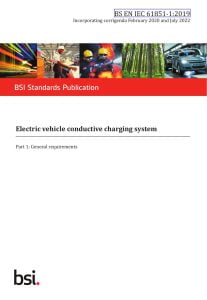This post is about the definitions in BS EN IEC 61851 Part 1 (2019) a standard called “Electric Vehicle Conductive Charging System, Part 1: General Requirements” These definitions are different to the terminology used normally when talking about charging speeds.
I was reading through IEC 61851-1 to check something else out for an upcoming blog post when I was reminded that EV Charging Cases and EV Charging Modes mean something different in the standards.
The Charging cases are defined in Part 1, specifically, they are listed in §3 Terms and Definitions.
EV Charging Modes are defined in section 6. and again should not be confused with either the Cases or the modes in EV Charging Modes.
Why the name?
The copy of the standard I have is called BS EN IEC 61851 Part 1 (2019) “Electric Vehicle Conductive Charging System, Part 1: General Requirements”.
- The BS part tells you it is a document compelled and published by the British Standards Institute.
- The EN part tells you that the document is a European Standard, (sometimes called Euronorm, abbreviated EN, from the German name Europäische Norm,) this means that this standard has been ratified by one of the three European Standards Organizations:
- European Committee for Standardization (CEN),
- European Committee for Electrotechnical Standardization (CENELEC),
- European Telecommunications Standards Institute (ETSI).
- The IEC part tells you that the standard was originally written by the International Electrotechnical Commision (IEC).
In this instance; BS EN IEC 61851 was ratified by CENELEC, and has their declaration on page 4.
EV Charging Cases
Case A
In §3.1.10 case A is defined as the “Connection of an EV to the supply network with a plug and cable permanently attached to the EV”
Key:
- (a) Socket-outlet
- (b) Plug
- (c) Cable
- (d) Vehicle connector
- (e) Vehicle coupler
- (f) Vehicle inlet
- (g) Charging station
- (h) EV socket Outlet
- (i) EV Plug
Case B
In §3.1.11 case B is defined as the “Connection of an EV to supply network with a cable assembly detachable at both ends”
This is most AC chargers, where the cable is not tethered to the EVSE.
Case C
In § 3.1.12 case C is defined as “Connection of an EV to a supply network utilizing a cable and vehicle connector permanently attached to the EV charging station”
This is how most AC tethered chargers or DC fast chargers are configured.
Charging Modes
There are four charging modes, §6.3 covers different functional requirements for the modes. I will cover them in subsequent posts, as they are relevant to further posts.
Mode 1
In §6.2.1 Mode 1 charging is defined as “a method for the connection of an EV to a standard socket-outlet of an AC supply network, utilizing a cable and a plug, both of which are not fitted with any supplementary pilot or auxiliary contacts.”
Mode 1 is limited to a maximum of 16 A on 250 VAC Single Phase, and 16 A on 480 VAC Three Phase, with local limits restricting it further.
EV supply equipment for use with Mode 1 charging requires a protective earth.
Mode 1 charging is prohibited in the US, United Kingdom and Israel, and in public locations in Italy. Other countries have restrictions on the use of Mode 1.
Mode 2
In §6.2.2 Mode 2 charging is defined as “a method for the connection of an EV to a standard socket-outlet of an AC supply network utilizing an AC EV supply equipment with a cable and plug, with a control pilot function and system for personal protection against electric shock placed between the standard plug and the EV”
Mode 2 is limited to a maximum of 32 A on 250 VAC Single Phase, and 32 A on 480 VAC Three Phase, with local limits restricting it further.
EV supply equipment for use with Mode 2 charging requires a protective earth.
Mode 2 also incures limitations and restrictions in different countries.
Mode 2 covers most EVSE equipment used for Levels 1 and 2 charging, which is not permanently connected to the mains, such as an “In Cable Control Box” (ICCB) (commonly referred to as a “Granny Charger” or “Granny Cable”)
Mode 3
In §6.2.3 Mode 3 charging is defined as “a method for the connection of an EV to an AC EV supply equipment, with a control pilot function that extends from the AC EV supply equipment to the EV”
EV supply equipment for use with Mode 3 charging requires a protective earth to the EV Socket-outlet and or to the vehicle connector.
Mode 3 covers the rest of the EVSE equipment used for Levels 1 and 2 charging, regardless of its a residential or commercial installation.
Mode 3 is for permanent installations.
Mode 4
In §6.3.4 Mode 4 charging is defined as “a method for the connection of an EV to an AC or DC supply network utilizing a DC EV supply equipment, with a control pilot function that extends from the DC EV supply equipment to the EV”
Mode 4 supply equipment is normally permanently installed, however there is provision for it to be used in temporary installations.
EV supply equipment for use with Mode 2 charging requires a protective earth.
Mode 4 covers EVSE equipment used for Levels 3 charging.







